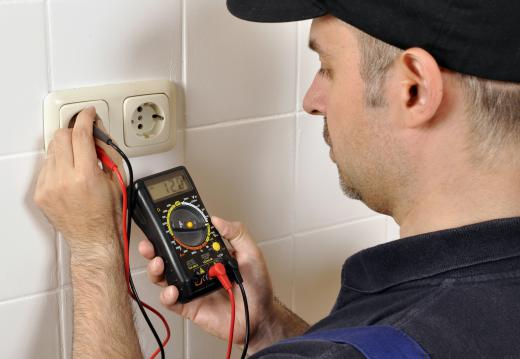An electrostatic voltmeter measures the voltage of any particular material's surface without transferring excess current charge. In other words, this instrument more precisely measures the static charge generated by a material's surface without contributing excess charge to the results in the process. When measuring the voltage of a material, the current generated between the instrument and the material's surface creates a natural charge that can skew the results of the actual voltage of the material. Thus, an electrostatic voltmeter is vital to preventing inaccurate measurements and results.
Although an electrostatic voltmeter might be required to touch the surface in order to measure, the most desired electrostatic voltmeters require no contact between its probe and a material's surface ensuring clean results. In fact, the probe is placed about 0.04-0.20 inches (1-5 mm) away from the surface — close but not at all touching the material. In addition, many of these types of voltmeters are equipped with an ability to null the electric field between the probe and the surface. This is possible because the voltmeter will increase the voltage of the instrument probe until it matches the voltage of the surface in question. When both voltages are equal, the voltmeter is more accurately able to measure the surface's voltage, often achieving an accuracy within 0.05-0.1 percent of full scale.

There are a number of significant benefits to using an electrostatic voltmeter besides its high rate of measurement accuracy. Such voltmeters facilitate the voltage measurement of a moving surface. Nulling the electrostatic field between the probe and the surface allows for more leeway in spacing changes between the probe and the area of the surface being measured at any one time.
Collecting data through the use of an electrostatic voltmeter also minimizes the chance of arc-over between the probe and the surface area. Arc-over refers to the resulting charge created from the interaction between a high-voltage surface and an instrument probe. Thanks to electrostatic nullification, arc-over is eliminated, allowing for more stable direct current (DC) electricity. More stable DC electricity, in turn, leads to the notable accuracy of the electrostatic voltmeter over its more common counterpart, the electrostatic fieldmeter. Fieldmeters measure the total voltage of a material and not simply the surface voltage of the material, important when determining the electrostatic potential between a material's surface and an industrial machine.
Electrostatic voltmeters are typically used in the industrial sector. They are used for a wide variety of applications specific to businesses in that industry. The uses might include measuring the surface voltage of industrial materials such as rubbers, plastics and polymers; evaluating the effects of radiation; and analyzing the properties of photoreceptors.
